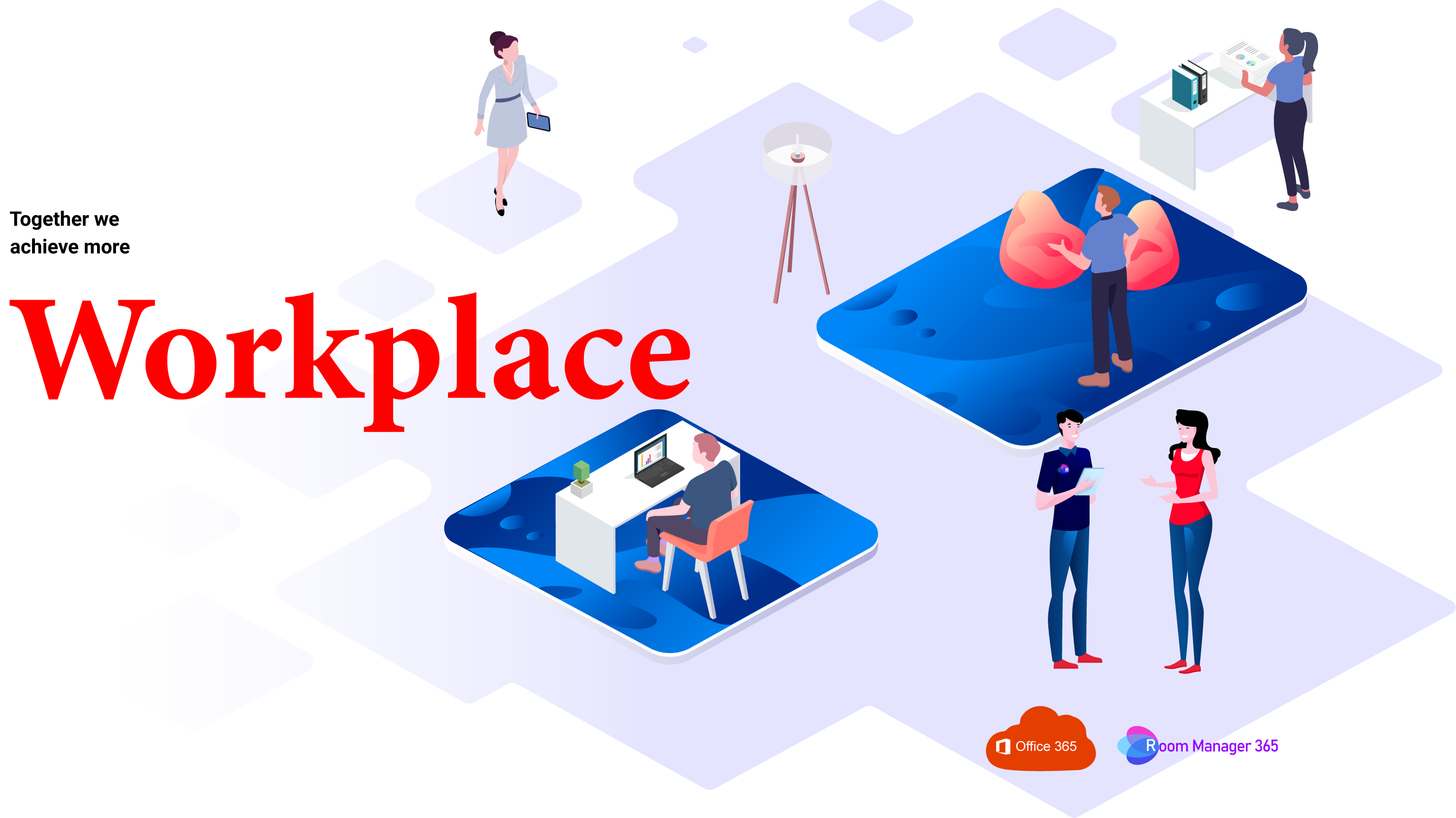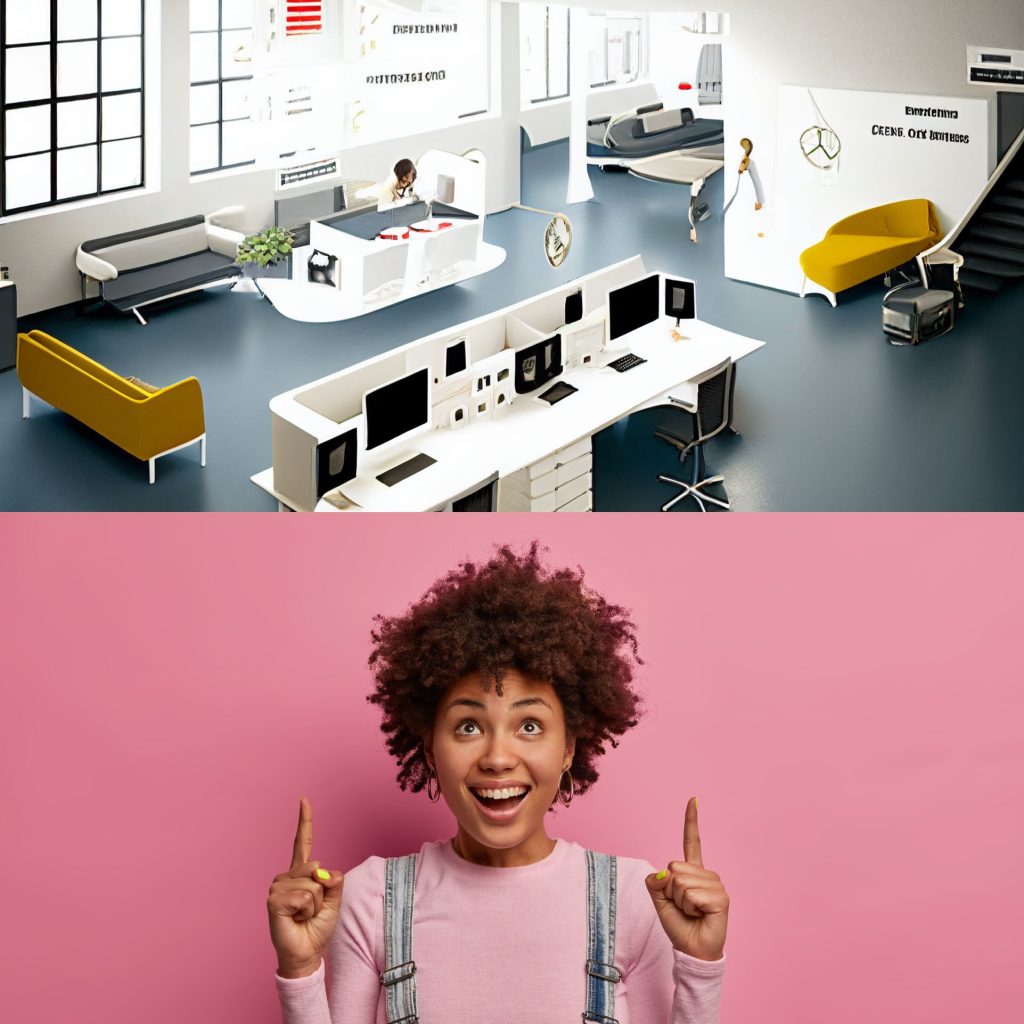
Hoteling
A workplace management case that allows employees, visitors, and guests to search for and book a workspace (desk, cubicle, room, space, etc.) for a specified period.
The days of sitting next-to-each other at desks are over—for now, it seems to us. Instead, social distancing standards, advanced cleaning needs, health questionnaires before booking, and contact tracing are the keywords today—fast-tracked hoteling for many employers who need ways to bring employees back as safely as possible.
Welcome employees back to work as safely and efficiently as possible.

- Centralized Workspace Management
- How many rooms are available right now?
- How are requests processed and reservations made?
- What confirmation standards are in place?
- How can employees change or cancel their reservations?
Choices within a Flexible Working Environment
A flexible working environment is a workplace that does not have fixed seating arrangements and gives employees flexibility when and where they work. This is often facilitated via concepts such as hot-desking or hoteling. This article will further illuminate these strategies and review how they are implemented, their drawbacks, and how specific existing tools like Room Manager can be implemented to ensure employees’ success and satisfaction.

Hot Desking
Hot desking can be generally described as an office setup whereby any employee can utilize any free seat, desk, or workstation whenever they arrive at the office each day. However, this strategy significantly contributes to discontent among workers in an open-office layout. Employees often do not know where they will be stationed the next day, with whom they will be working, or if they will find a free desk next to a colleague. Additionally, most employees prefer familiarity in their workspaces, and the uncertainty of securing a workstation daily may be draining.

Use Desk Keywords for filtering
For instance, take a scenario where an individual in the IT department is required to write code. This employee may sit next to a Sales Representative who spends a lot of time on conference calls with clients and partners. This would reasonably discourage the employee in IT, who would much prefer a quiet environment for their work.


Interactive office and floorplans
Popular mitigation for this matter is setting up conditions and rules for employees to work in certain places and establishing zones and neighborhoods. This ensures, for instance, that employees in the same department, or projects, are situated within the same zones.
This effectively creates a flexible working principle and establishes a form of governance in the hot desking system. In addition, interactive Floorplans can help to find the right free seat and desk by using Keyword Filtering, which is available in the Room Manager Desk Management solution.
Users can use keywords and amenities to narrow down the search results when searching for a free desk. For a sample, an IT developer can search for a complimentary desk or space by using keywords that match his preferences for a quiet or isolated desk or space.

Hoteling is another way used to implement flexibility within a working environment. This process allows employees to book a particular workstation, desk, or any other work space, conference room, or bookable resource available in the office.
Even though workstations are not allocated to specific employees, the hoteling approach gives significantly more autonomy and control over where each employee is working.
Check-in Check-out System: Hoteling
- Rules and policies
- Location and office filtering
- Check-In
- Find friends
- Office maps
Conclusion / Summary
Hot desking and hoteling approaches are increasingly viable in implementing flexible working environments. When properly implemented about the specific needs of the company and your employees, they tend to be effective and, consequently, positively affect the engagement and productivity of employees.
Gallery
Navigate your workspace with ease









